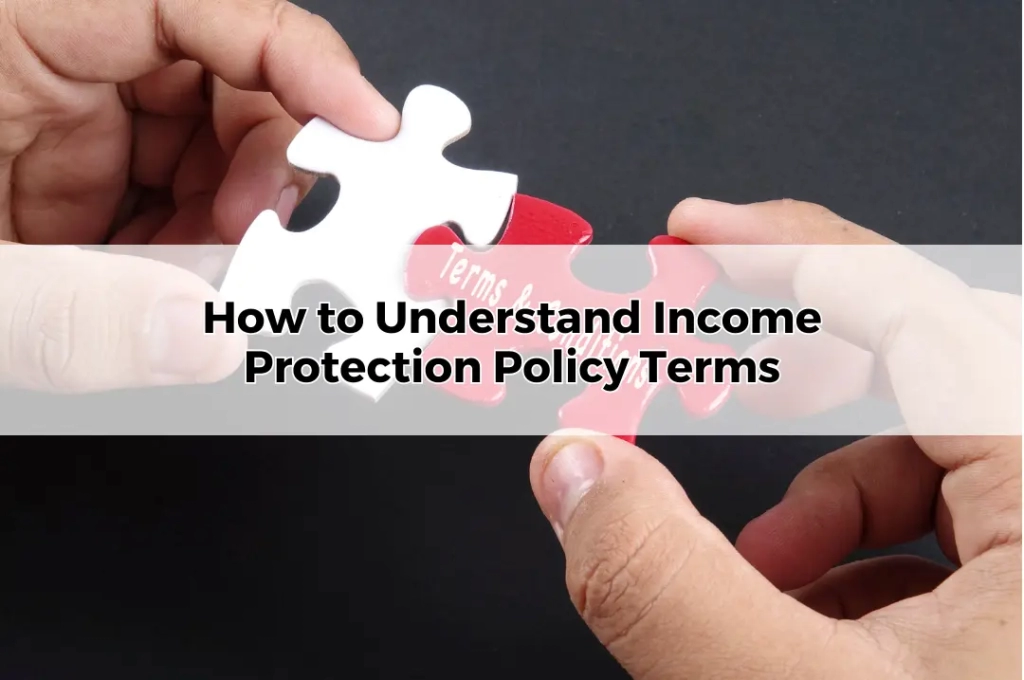How to Understand Income Protection Policy Terms
Table of Contents
ToggleIncome protection insurance is a vital part of a comprehensive financial plan, offering peace of mind by ensuring a steady income if illness or injury prevents you from working. However, the policy terms can be complex and confusing, leaving many unsure of the coverage they are signing up for. Understanding these terms is critical for making informed decisions, as the fine print can significantly affect your benefits. In this blog post, we will delve into the most important aspects of income protection policies, helping you make sense of the jargon and secure the right coverage for your situation.
What is Income Protection Insurance?
Income protection insurance is designed to replace a portion of your income if you’re unable to work due to illness or injury. Unlike other insurance products that pay a lump sum, income protection typically provides regular monthly payments, helping to cover living expenses such as mortgage repayments, bills, and day-to-day costs. The aim is to provide financial stability while you focus on recovery. Whether you’re self-employed, working full-time, or part-time, this type of insurance ensures that a temporary or permanent setback doesn’t derail your financial future.
Key Components of an Income Protection Policy
An income protection policy is made up of several key components that dictate the level of coverage and the circumstances under which benefits are paid. These include the waiting period, benefit period, policy premiums, and exclusions, all of which influence the cost and suitability of the policy for your needs. Understanding these elements helps you tailor the policy to your individual circumstances, ensuring you receive the right amount of cover when you need it most.
Waiting Period
The waiting period is the time you must wait after becoming unable to work before your benefits begin to be paid. Typical waiting periods range from 14 days to 90 days or longer. Shorter waiting periods result in higher premiums, while longer waiting periods reduce the cost of the policy. It’s essential to consider your savings and emergency fund when selecting a waiting period—those with greater financial reserves might opt for a longer waiting period to reduce premium costs, while others may prefer faster access to benefits.
Benefit Period
The benefit period is the duration for which you will receive payments if you are unable to work. Common options include two years, five years, or until retirement age. Shorter benefit periods are less expensive but provide limited protection, while longer benefit periods ensure extended coverage but come at a higher premium. When choosing a benefit period, it’s important to consider how long you might need financial support if you are unable to return to work. For many, the security of a long-term benefit period is worth the extra cost.
Policy Premiums
Income protection policies typically offer two types of premium structures: stepped and level. Stepped premiums increase as you age, making the policy cheaper in the short term but more expensive over time. Level premiums remain constant throughout the policy term, resulting in higher initial costs but providing long-term affordability. When considering retirement financial advice, it’s important to weigh your current financial situation against your future needs. For those planning to maintain their coverage into retirement, level premiums may provide better value over the long term.
Definition of Disability
Income protection policies define disability in different ways, with the most common definitions being total and partial disability. Total disability means you are completely unable to work in your occupation, while partial disability covers situations where you can still perform some duties but not at full capacity. Understanding these definitions is crucial, as they determine your eligibility for benefits. Some policies also allow for a rehabilitation benefit, encouraging a gradual return to work by providing payments even if you are only working part-time.
Agreed Value vs Indemnity Value Policies
Income protection policies offer two methods for calculating benefit payments: agreed value and indemnity value. An agreed value policy guarantees a set monthly benefit based on your income at the time you take out the policy, regardless of any changes in your income thereafter. Indemnity value policies, on the other hand, calculate your benefits based on your income at the time of your claim. Agreed value policies provide more certainty but come with higher premiums, while indemnity policies are more affordable but can leave you exposed if your income has decreased.
Exclusions and Limitations
Exclusions are specific circumstances under which your income protection policy will not pay out. Common exclusions include pre-existing medical conditions, injuries sustained during high-risk activities, or illnesses related to drug and alcohol use. It’s crucial to read the policy’s exclusions carefully to avoid surprises when making a claim. Additionally, some policies may impose limitations on the duration of benefits for mental health conditions or other specific scenarios. Understanding these restrictions ensures you’re not left vulnerable to unforeseen gaps in coverage.
Offsets
Income protection policies often include offset clauses, which reduce the amount of your benefit if you are receiving income from other sources, such as workers’ compensation, sick leave, or other insurance policies. This means that while your total income will not exceed a certain percentage of your pre-disability earnings, your policy payout may be lower than expected if you have other income streams. Discussing these potential offsets with a financial adviser is critical to ensuring you have a full understanding of how much support you will receive in the event of a claim.
Tax Implications of Income Protection Payments
Unlike life insurance or total and permanent disability insurance, the premiums you pay for income protection insurance are usually tax-deductible. However, the benefits you receive from an income protection policy are considered taxable income. This means that you’ll need to account for the tax impact when budgeting for how much you’ll receive after making a claim. It’s important to factor in the potential tax liabilities when calculating the level of coverage you need, ensuring that your net benefits will be sufficient to cover your financial commitments.
Choosing the Right Policy for Your Needs
Selecting the right income protection policy is a personal decision that depends on your financial situation, occupation, and risk tolerance. Consider factors such as your current income, living expenses, and long-term financial goals when choosing a policy. Working with a Toowoomba financial adviser or an online financial adviser can help you navigate the complexity of income protection policies, ensuring you select the right coverage for your specific needs. Customising your policy ensures that you strike the right balance between affordability and comprehensive protection.
Conclusion
Income protection insurance is a vital safeguard for maintaining financial stability in the face of unexpected illness or injury. Understanding the key terms and policy features allows you to make informed decisions and ensures that your coverage meets your financial goals. Whether you’re considering stepped or level premiums, evaluating the benefit period, or understanding exclusions, thorough knowledge of your policy’s terms is essential for securing your financial future. For expert advice and tailored retirement financial advice, consulting a Toowoomba financial adviser is the best way to ensure your income protection policy provides the peace of mind you need.









